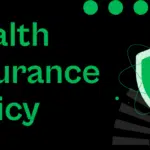Reverse mortgage are loans for folks 62 or older. They let you turn some of your home’s worth into cash. You won’t have monthly mortgage payments to handle. This extra money can help boost your retirement funds, handle medical bills, or do repairs at home.
Yet, a reverse mortgage has its downsides too. It can affect any governmental benefits and lower what you can leave to your family. There’s also the interest that grows over time. Before diving in, make sure you know all about the rules, costs to start, and the fees involved.
Key Takeaways
- Reverse mortgages allow homeowners aged 62 or older to access a portion of their home’s equity without monthly payments.
- These loans can provide financial relief for retirees, but it’s important to understand the potential drawbacks, such as reduced inheritance and impact on government benefits.
- Eligibility requirements include being at least 62 years old and using the home as a primary residence.
- Reverse mortgages come with upfront costs and ongoing fees, including origination fees and mortgage insurance premiums.
- Homeowners should carefully consider alternatives and seek guidance from a reverse mortgage counselor before making a decision.
Understanding Reverse Mortgages
A reverse mortgage is a unique type of loan. It’s for homeowners who are 62 or older. They can use the equity in their home without making monthly payments. Unlike regular loans that get smaller over time, this one gets bigger as interest adds up.
Types of Reverse Mortgages
Several types of reverse mortgages are out there. Each type has its own features and rules:
- HECM (Home Equity Conversion Mortgage): This option is most common. It’s backed by the Department of Housing and Urban Development (HUD).
- Single-Purpose Reverse Mortgage: These are offered by state and local groups or non-profits. They’re usually the cheapest option.
- Proprietary Reverse Mortgage: Private-label options for high-value homes. They sometimes offer bigger loans.
Benefits of a Reverse Mortgage
Reverse mortgages offer lots of advantages to senior homeowners:
- Supplemental Retirement Income: Retirees can get a lump sum, a line of credit, or regular payments. This can help boost their retirement income and savings.
- Covering Healthcare Costs: It can help pay for healthcare and home adjustments. These can make aging at home easier for seniors.
- Financial Freedom: With a reverse mortgage, homeowners can free up their home equity. This can give them more financial freedom and independence.
Also Read : Navigating the world of skincare treatments from facials to peels
Eligibility Requirements for Reverse Mortgages
To get a reverse mortgage, you need to be at least 62 years old. This ensures only older homeowners can get this type of loan.
Your home must be where you live full-time as your primary residence. It can’t be a place you visit sometimes or an investment property.
Before getting a reverse mortgage, a financial assessment is necessary. This checks if you can keep up with property taxes and homeowner’s insurance. Lenders do this to prevent any future financial troubles for the homeowner.
Your home should be in good shape and meet a certain value to get a reverse mortgage. Lenders will look at the home’s value to make sure it’s fit for the loan.
If you meet all these rules, you can get a reverse mortgage. This loan lets seniors use their home’s equity for things like extra income in retirement or home repairs.
Also Read : Your Path To Ageless Beauty Starts Here: Introducing Life Cell Skincare
Reverse Mortgage Costs and Fees
When thinking about a reverse mortgage, it’s key to know the costs and fees. These can greatly affect the loan’s financial impact. So, it’s wise to fully understand them before deciding.
Upfront Costs
Reverse mortgages have certain upfront costs. These include:
- Closing costs: They can be 2% to 5% of the home’s value. Fees for title searches, appraisals, and other services might be included.
- Origination fee: Lenders charge this to process the reverse mortgage application. It’s usually 0.5% to 2% of the home’s value.
- Mortgage insurance premium (MIP): An upfront MIP is needed, typically 2% of the home’s value.
Also Read : How To Get Financial Well Being To Raise Your Credit Score?
Ongoing Costs
Besides upfront costs, reverse mortgage borrowers pay ongoing expenses. These include:
- Mortgage insurance premium (MIP): An annual MIP is paid, typically 0.5% of the loan balance.
- Property taxes: Paying property taxes, homeowner’s insurance, and any homeowner’s association fees is a must.
The costs and fees with a reverse mortgage can hugely affect the loan’s total cost. Borrowers should look for the least expensive reverse mortgage options that suit their financial situation.
| Upfront Costs | Ongoing Costs |
|---|---|
| Closing costs (2-5% of home value) | Mortgage Insurance Premium (0.5% of loan balance) |
| Origination fee (0.5-2% of home value) | Property taxes |
| Mortgage Insurance Premium (2% of home value) | Homeowner’s insurance |
| Homeowner’s association fees |
Reverse Mortgage and Your Home Equity
With a reverse mortgage, you can use some of your home’s equity for money. This way, you don’t have to pay back any mortgage payments each month. You can take out money based on things like how old you are, the value of your home, and the interest rates now.
Also Read : Finding The Right Fit For Your Needs By Understanding Loan Options
How Equity is Accessed
So, a reverse mortgage gives you money based on the value of your home. This loan gets bigger over time because of negative amortization and the interest it collects. You must pay back the whole loan when you sell your home, move out, or if you die.
Impact on Inheritance
Let’s talk about how reverse mortgages affect what you can leave behind for your family. The amount you owe grows with time. This can mean less equity in your home to share with your heirs. It’s crucial for homeowners to think about what they’ll leave their families or if they can pay off the loan before selling the home.
Also Read : From Shave To Shine: Simplifying Your Daily Men’s Skincare Routine
Reverse Mortgage for Home Purchase (HECM for Purchase)
The HECM for Purchase lets seniors buy a new home with a special kind of reverse mortgage. It’s for those aged 62 and over. This way, they can move into a more fitting home or near family without using all their savings.
How HECM for Purchase Works
With a HECM for Purchase, the buyer doesn’t need a big down payment. They use the amount from the reverse mortgage for the whole house’s purchase. This means they can save their money for anything else they need. They also get to live in a home they really like.
To get this loan, seniors have to work with a reverse mortgage lender. They need to be 62 or older and use the new home as their main living place. The costs and fees are like those of a standard reverse mortgage.
A big plus is not having to worry about monthly mortgage payments with a HECM for Purchase. They only need to keep up with property taxes, insurance, and maintaining the home. The loan is repaid later, usually after they move out or pass away.
Also Read : Decoding The Loan Approval Process: A Comprehensive Guide
FAQs
Q: How does a reverse mortgage work?
A: A reverse mortgage is a type of loan that allows homeowners, typically seniors aged 62 and older, to access their home’s equity in the form of cash while retaining ownership of the home.
Q: What is a reverse mortgage?
A: A reverse mortgage is a financial product that enables homeowners to convert a portion of their home equity into cash without having to sell their home or make monthly mortgage payments.
Q: What are the alternatives to a reverse mortgage?
A: Some alternatives to a reverse mortgage include downsizing to a smaller home, taking out a traditional mortgage, or exploring other financial options to supplement retirement income.
Q: How can a homeowner qualify for a reverse mortgage?
A: To qualify for a reverse mortgage, the homeowner must be at least 62 years old, own their home outright or have a low mortgage balance, and live in the home as their primary residence.
Q: What are HECM reverse mortgages?
A: HECM stands for Home Equity Conversion Mortgage, which is a common type of reverse mortgage insured by the Federal Housing Administration (FHA) that allows seniors to access their home equity.
Q: How do you repay a reverse mortgage?
A: The reverse mortgage becomes due when the homeowner moves out of the home, sells the property, or passes away. The loan, including interest and fees, must be repaid by the borrower or their heirs.
Q: What factors determine how much a homeowner can get from a reverse mortgage?
A: The amount a homeowner can receive from a reverse mortgage is based on factors such as the homeowner’s age, the home’s value, current interest rates, and the type of reverse mortgage chosen.








